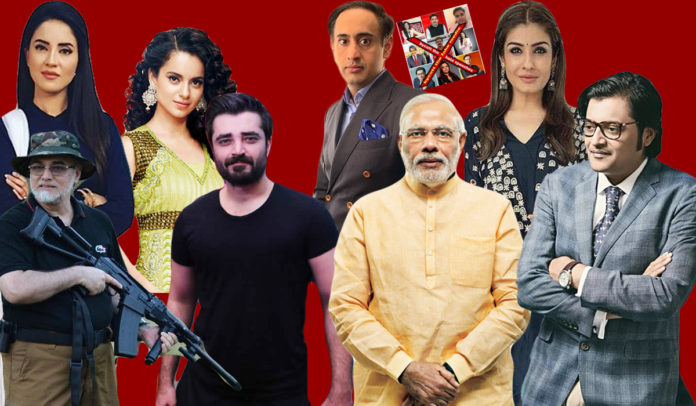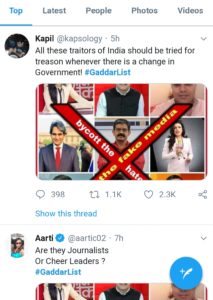After capturing the global headlines for around half a month, the recent Indo-Pak conflict has finally started settling down. What had started after the Pulwama incident in Indian Occupied Kashmir, finally concluded; at least for common Pakistanis like me, with Pakistan releasing the captured Indian pilot as a peace gesture.
A lot happened in-between. Over forty Indian paramilitary personnel lost their lives, India violated Pakistani airspace, twice, lost two of its fighter jets, got one of their pilots captured, and even compelled Pakistan to conduct retaliatory airstrikes in India.
India also made claims of shooting down a Pakistani F-16, whereas Pakistani military spokesperson said it didn’t even use a single F-16 in the entire action. Pakistani Prime Minister Imran Khan repeatedly made peace calls, quite literally, whereas the Indian Prime Minister Narendra Modi seemed busy conceiving pilot projects and real episodes of further escalation.
As a Newsmaker
Born in the early nineties, the entire incident was a first such in my life. The nuclear tests, the Kargil war, the 2002 Indo-Pak standoff are not really registered in my memory. I only have a faint memory of my father watching the 9/11 news, but I clearly remember the Laal Masjid incident, Bin Laden raid, and a lot more afterward.
This incident, however, was special for two reasons. For starters, as I said, it was the first such Indo-Pak conflict of my life. Secondly, being the editor of this website during the conflict, I got to cover it from the standpoint of making news and developing stories around it.
Like all things, however, the details of the entire episode have already started taking a backseat in the memory and will eventually get erased. And like Trivedi from Sacred Games, only the highlights will live on.
The good thing about highlights is that they provide you a sort of vantage point on the entire memory. When I see this incident from that angle, among the first such big highlights are those faces that played the biggest role in fanning the hostile air in the whole episode.
The Enemies
I call them the enemies. Enemies of peace, enemies of over 150 crore people who live in this region, and the enemies of humanity simply.
And just to clarify to the readers in Pakistan and India, I am talking about neither the Wing Commander Abhinandan Varthaman who barged into Pakistani territory with his hostile intentions, or the Squadron Leader Hassan Siddiqui who shot down those intentions. These people are in fact the heroes of their respective nations.
I am talking about people who created this environment in the first place. And then fanned it so much that the Indian leadership was forced to commit such an act, and resutantly forced Pakistan to react.
On the Indian Side
When the Pulwama incident had happened, there was no jubilation in the air in Pakistan. At least I didn’t feel it. I did have a worry though. Worry that the Indians will once again instantly blame Pakistan for yet another militant attack on their territory, and my country’s name will once again be mentioned with the word ‘terrorism.’
Therefore, once the Indian government and media started blaming Pakistan for the attack, there was no real surprise, only sadness. But then in my hunt for news, I started noticing how fast were things shaping up for the worst.
Indian PM and the media started talking about avenging the Pulwama attack. Soon it was also clear that it would be Pakistan whom this will be avenged from. PM Modi had made such threats a day after Pulwama, but then there was a long silence from him.
https://www.youtube.com/watch?v=j6Z175tQ3H0
Indian media, however, kept discussing how this should appropriately be done. Curating different war strategies for its government, exploring the option of “Surgical Stike 2.0,” and basically feeding the Indian populace a heavy dose of war narrative, the Indian media did all.
With the groundwork laid in, they started putting the mic in every mouth, asking how should India respond to Pakistan? After that, we saw Bollywood celebrities joining the party where one of them even went to the extent of putting the option of Pakistan’s total annihilation on the table.
Now, your patriotism aside, feeding such a notion to your public; in a tensed environment between two nuclear-armed countries, two countries with a huge population that comforts itself in seeing smaller pictures to even the biggest of problems, this was not only stupid, it was treacherous.
What an explosive morning ! As india celebrates ! I salute the 12 bravehearts for meting out justice for our Pulwama boys ! Our Neighbours often complain of being victims of terrorism themselves .. they need to thank us . ?????????????? Jai Hind.
— Raveena Tandon (@TandonRaveena) February 26, 2019
See, the beauty of neutrality is that it keeps you grounded. It keeps your emotions checked, and helps you see a larger picture. Indian journalism, however, seems to have no such concept.
It kept riling up its audience. Kept telling them that they are victorious even when two of their fighter jets were down, had a pilot captured, and the adversary was winning the optics. It kept misleading its people even when it got exposed by its own who tried bringing in neutrality in the entire situation.
On the Pakistani Side
Although the Pakistani government, opposition, and its media largely handled the entire situation quite gracefully, there was no shortage of warmongerers on this side either.
https://www.youtube.com/watch?v=peWZq7CwsgM
There was a section of the media that seemed to not mind the idea of both the countries going to war. It got caught in the game that Indian media was playing, and started imitating it for the sake of ratings. Instead of leading the nation in such times, they started serving the anger of it.
Even when Imran Khan was trying his best to pacify the situation, there was a section of media that kept propagating locally that it was a wrong idea.
So the Govt plans to release the Pilot unconditionally. I hope they dont.
So what will happen next ?
Modi's plan has been destroyed & now he need this "victory"…which would be celebrated to galvanize & regroup their defeated nation. Expect more aggressive war hysteria now.— Zaid Hamid (@ZaidZamanHamid) February 28, 2019
And then there were those who were enjoying the entire situation in their own twisted ways:
Hey lil champ! Ur dad is a soldier, be proud of him. We r sending him back to u. But whn u do hug him aftr he is back, ask him is war & death for Modi's political campaign worth it? Also ask him tht dont lil champs like u in Kashmir deserve to live in peace with thr dads? PEACE❤️ pic.twitter.com/UHttKp9M59
— Hamza Ali Abbasi (@iamhamzaabbasi) February 28, 2019
Abhi Abhi Tu Ayo Ho…Achi Mehmaan Nawazi Ho GI Aap Ki? pic.twitter.com/BDcWO25orE
— VEENA MALIK (@iVeenaKhan) February 27, 2019
Now, this is not to suggest that it was a complete craze-fest on both sides of the border. There was definitely a lot of saneness in Pakistan, and we did hear some sane voices coming from India too. Earlier today, on Twitter, India was celebrating the hashtag “GaddarList.”
They were mostly using it to highlight the extremely negative role that their media played in the entire situation. I appreciate this introspection and urge Pakistanis to follow suit.
Being the editor of a newsmaking website, I understand how much hate sells. I understand that patriotism, religion, and conflict have all got some big markets out there. In critical moments like these, however, one must not blindfold themselves like the Indian pilot is in that picture above, and start blurting out whatever they feel like.
Your one tweet, one television program, and one article can add significantly up to the sea of idiocy out there, help it grow, and have consequences. #MayTheBetterSensePrevail







You are an entertainment website and it’s probably better that you stick to what you know. Such a bad analysis. Are these ‘real enemies’ because Veena Malik & Hamza Abbasi tweeted. Their tweets are neither racist nor hateful. Probably you have not seen what Indian celebrities, and sportsman are saying.
Probably next time when you think of venturing out of your comfort zone do some thorough research on the subject.